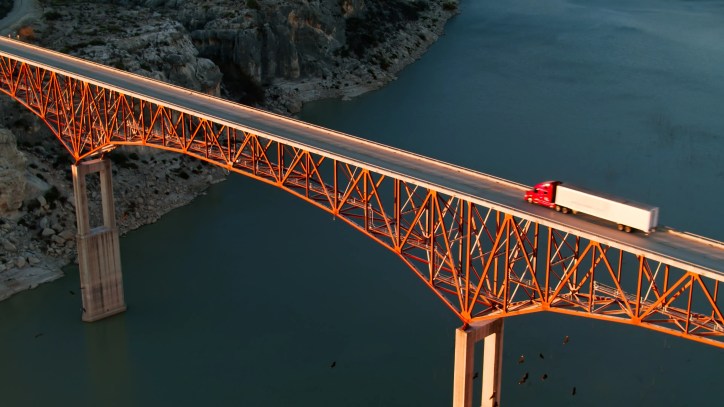Bridges may not quite be the backbone of infrastructure, but they certainly make up much of its skeletal system. Providing pedestrian and vehicular passageways over obstructions, including rivers, roads, and valleys, bridges have eased the flow of traffic with minimal complication for thousands of years. Unfortunately, despite their indisputable importance, a troubling amount of bridges in the United States may not uphold to the structural integrity that the society and people around them require.
Of the 614,387 bridges spread throughout America, it was estimated in 2013, by an Associated Press analysis based on the National Bridge Inventory, that 65,605 are classified as “structurally deficient” and 20,808 are “fracture critical”. In fact, 7,795 actually fall under both of these classifications, a combined status that signals a precariously high possibility of collapse.
In some ways, the susceptibility of bridges to destruction and faulty performance comes as no surprise. At their core purpose, in addition to extending roadways, these structures exist by resisting the force of gravity. After enough time, the Earth’s permanent downward pull will demonstrate some effects.
However, requirements and guidelines are in place to assure reliability in the different components of bridges, mitigating any impact that gravity and other natural forces can wage on the infrastructure. Standards published by international standards developing organizations (SDOs), such as ISO and ASTM International, as well as developers of American National Standards, such as the American Society of Civil Engineers (ASCE), offer specifications, testing procedures, and standard practices for various aspects of bridges.
These voluntary consensus standards, due to their periodic revision process, remain up-to-date with the practices and highest knowledge of the industries and professions that they serve. For example, ASTM D5977-15 – Standard Specification for High Load Rotational Spherical Bearings for Bridges and Structures is a revision of ASTM D5977-03(2012). Because of this, any bridge built in 2015 may have inherently been done so with greater knowledge than one constructed just 3 years prior.
However, this is not to imply that bridges aren’t maintained. Every U.S. highway bridge must be inspected at least once every two years. Fracture critical bridges are inspected even more often. Construction on these elevated roadways is frequent.
There is, though, an apparent issue with existing bridges: they’re old. After President Eisenhower signed the Federal-Aid Highway Act of 1956, workers rushed to install America’s collection of bridges throughout the Interstate Highway System, and many of these structures are still standing today. For bridges, age matters. According to ASCE, the average lifespan of a bridge is 50 years, and almost 4 in 10 bridges throughout the country have surpassed this age.
There is a clear separation between the knowledge possessed by organizations like ASCE and the practices that were used to design and construct a massive portion of the bridges in the United States, simply because they were done so either before the existence of those standards or prior to their current editions. It is unsettling enough that these bridges are still standing, let alone the fact that in 2016, on average, there were 188 million trips across a structurally deficient bridge every day.
Whether through complete replacement of the bridges or updates to their components, America’s bridges exist in a dismal state and need to be fixed. Unfortunately, this rehabilitation, under the most recent estimate, could cost the nation $123 billion.
America’s bridges stand in poor condition, but they are not the worst of the nation’s infrastructure. In its 2017 Infrastructure Report Card, ASCE gave U.S. bridges a C+ grade. Not great, but certainly better than the D+ that was given to America’s infrastructure as a whole.
America has an infrastructure problem. The roads, bridges, rail, ports, airports, water and sewer systems that make up the shared physical architecture of our society is outdated, inefficient, and incapable of meeting the current demands of the people they serve. From May 15-19, 2017, people and organizations around the country are taking part in Infrastructure Week to highlight the importance of infrastructure and the need to invest in its projects. Anyone can take part in Infrastructure Week on social media by using #TimeToBuild.
